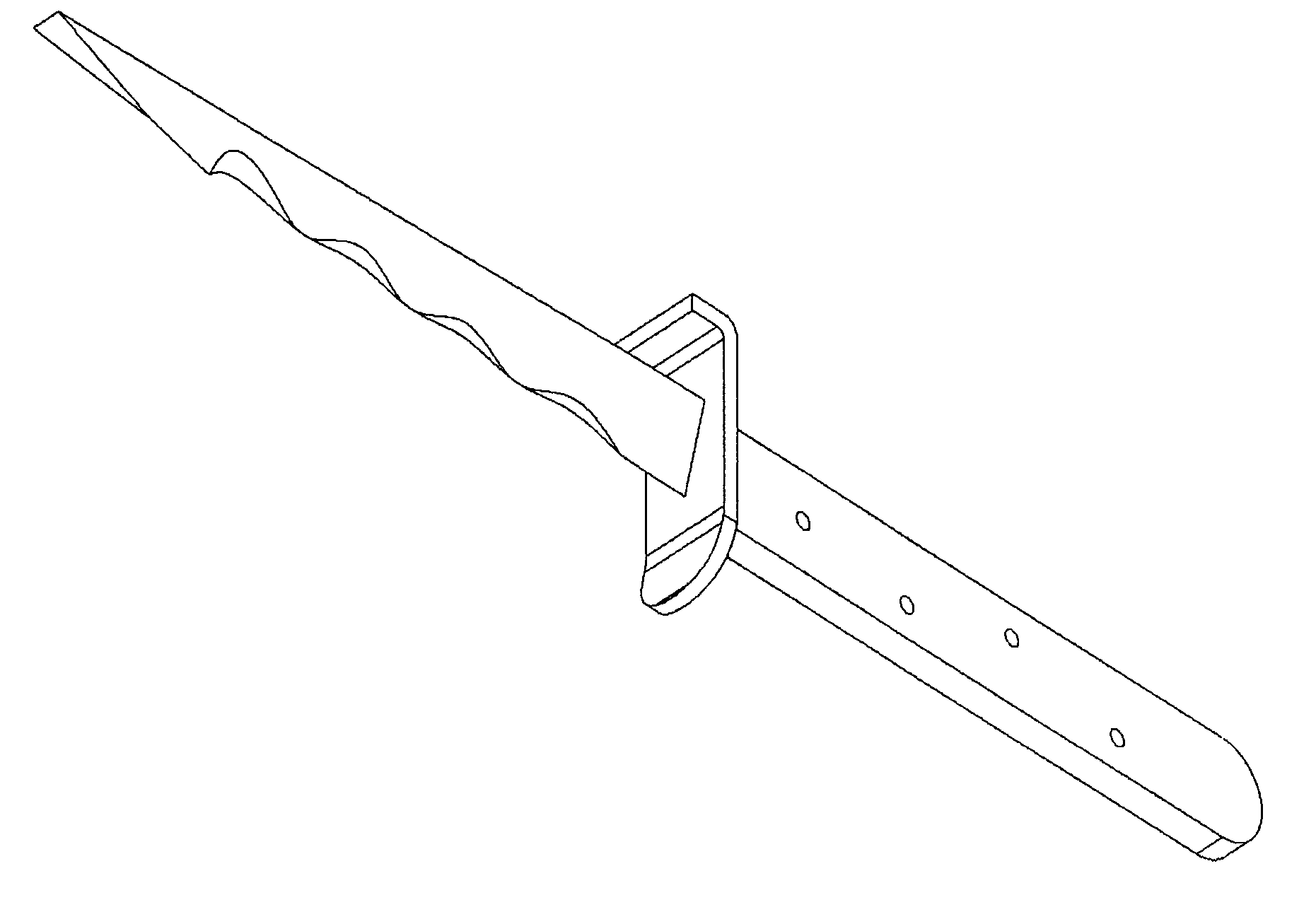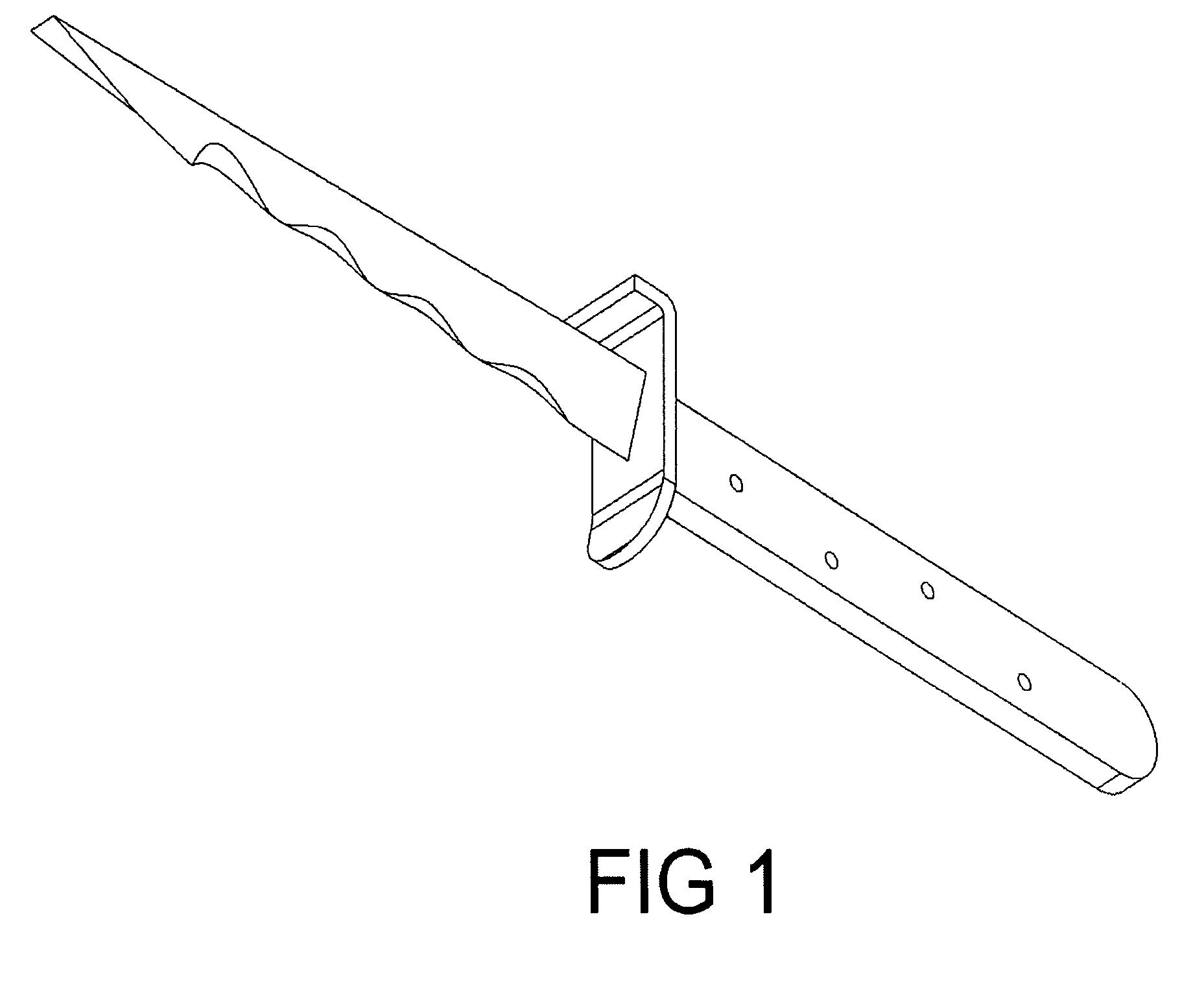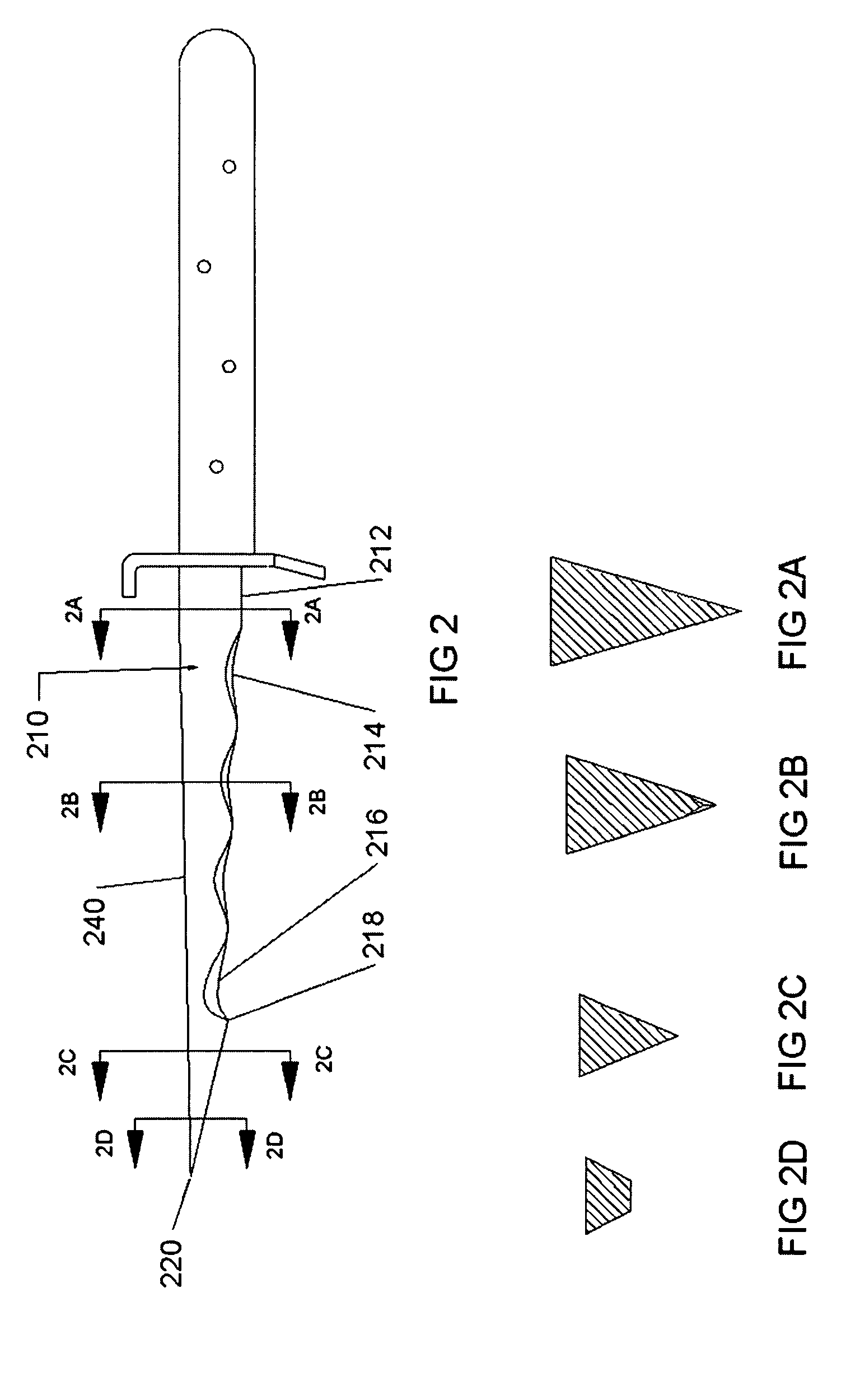Handheld tactical knife
a tactical knife and hand-held technology, applied in the field of knives, can solve the problems of lack of penetration power, and limited knife removal capacity, and achieve the effect of optimizing cross section, effective cutting edge, and improving strength
- Summary
- Abstract
- Description
- Claims
- Application Information
AI Technical Summary
Benefits of technology
Problems solved by technology
Method used
Image
Examples
Embodiment Construction
—Preferred Embodiment—FIGS. 1, 2, 2A, 2B, 2C, 2D, 3, 4, and 5
[0033]A preferred embodiment of the knife blade is shown in FIGS. 1, 2, 2A, 2B, 2C, 2D, 3, 4, and 5. A hilt and a handle are shown for illustration and orientation purposes in FIGS. 1, 2, 3, 4, and 5. FIG. 1 displays an isometric view of the preferred knife for perspective. FIG. 2 displays the side view of the knife. Knife blade 210 has an isosceles triangle cross section, shown in FIG. 2A. The preferred measurement of the cross section height from a short side to a tip is approximately 0.7 inches. In FIG. 2, the main cutting edge 212 is on the bottom of the blade. Scalloping 214 is cut into the cross section to improve cutting performance of the main blade. This cut into the cross section is displayed in FIG. 2B. Scalloping continues in a sinusoidal fashion for 3 iterations, then blends with the gut hook to create scalloped hook 216. Scalloped hook 216 transitions into the gut hook 218. From gut hook 218 to approximately ...
PUM
 Login to View More
Login to View More Abstract
Description
Claims
Application Information
 Login to View More
Login to View More - R&D
- Intellectual Property
- Life Sciences
- Materials
- Tech Scout
- Unparalleled Data Quality
- Higher Quality Content
- 60% Fewer Hallucinations
Browse by: Latest US Patents, China's latest patents, Technical Efficacy Thesaurus, Application Domain, Technology Topic, Popular Technical Reports.
© 2025 PatSnap. All rights reserved.Legal|Privacy policy|Modern Slavery Act Transparency Statement|Sitemap|About US| Contact US: help@patsnap.com



